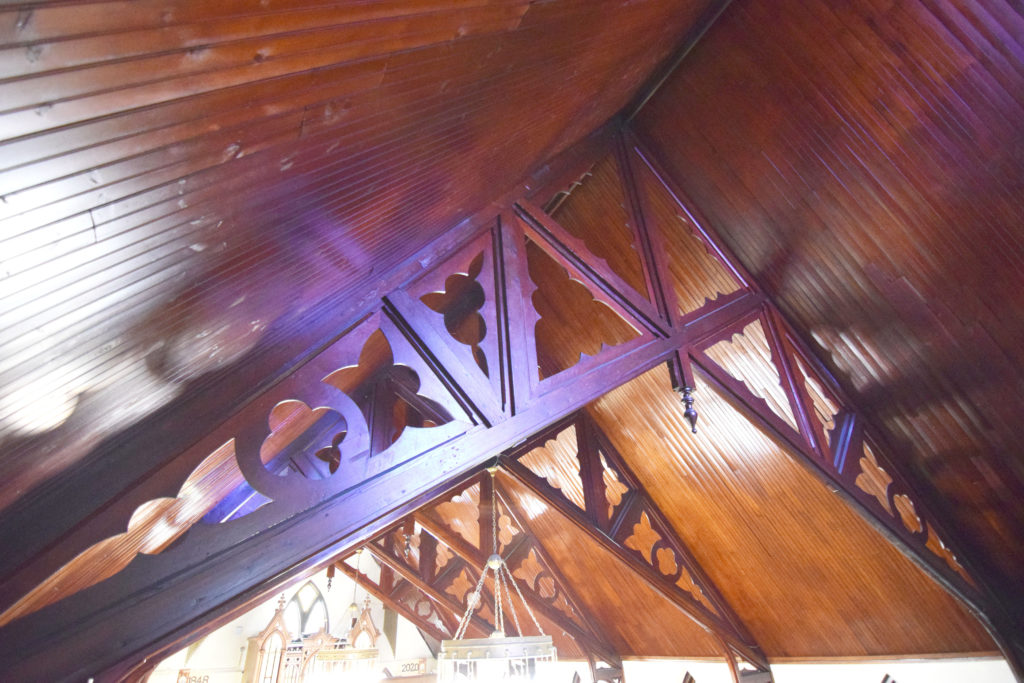Resilience Treatments & Strategies
Roof Structure

Description
Part of your building’s superstructure (the building’s load-bearing elements) that supports the top enclosure of the building. There are many roof construction types which influence the shape and pitch of the roof (e.g., trusses). Both the materials and the form of the roof are very important to the building’s resilience. They are among the most exposed faces of the structure and can be thought of as your building’s first line of defense from the elements. Partial or total roof failure can lead to water damage to anything inside your building. The roof materials, including flashing and trim, should be well-maintained, warrantied, and insured if possible.
Typical risk factor of this component:
Very High
The roof has very high exposure to elements such as wind and rain, which constantly cause wear. Its importance to the structure’s stability and the impact its failure might have on other assemblies are both very high.
Typical Damages from Floods or Hurricanes
- Structural connections loose or damaged
- Roof trusses showing oxidation (if metal) or wet/dry rot (if wooden)
- Wood frame members have become waterlogged and are buckling, bowing, cupping, or swelling
- Substantial pest/insect infestation (e.g., termite damage in wood surfaces)
- Roof materials (e.g. metal roof pans) fracture or creep due to high flexure under windy conditions
Other common conditions contributing to vulnerability towards floods or hurricanes
- Undersized drainage ports (e.g., scuppers and downspouts) handling water shedding from the roof
- Lack of overflow drainage
- Galvanic corrosion occurring between metal roof components (e.g., fasteners and flashing or trim)
- Oxidation (e.g., rust) of metal roof components
- Lack of underlayment (e.g., waterproof membrane, felt, building paper) between roof sheeting and roof structure
- Lack of hurricane-rated clips, anchors, or connectors
Resilience Treatments and Strategies
In-house
Regularly inspect (at least once yearly) for defects such as loose or missing roof shingles, evidence of ponding, accumulation of debris or vegetation, bird nests or other animal presences, etc. (see also NPS Preservation Briefs #4 and #29).
Implement an integrated pest management plan.
Maintain and renew insurance and warranties for roof materials and work.
Professional needed [type]
Reinforce roof structure and its connections with structural stiffening members to improve strength to forces such as wind [engineer].
Repair or replace damaged trusses or beams, and their connections [engineer].
Adjust size and layout of drainage system to properly shed water and protect building assemblies [architect].
- Install waterproof membrane when applying new roof materials, if appropriate [architect].
Roof Structure

Description
Part of your building’s superstructure (the building’s load-bearing elements) that supports the top enclosure of the building. There are many roof construction types which influence the shape and pitch of the roof (e.g., trusses). Both the materials and the form of the roof are very important to the building’s resilience. They are among the most exposed faces of the structure and can be thought of as your building’s first line of defense from the elements. Partial or total roof failure can lead to water damage to anything inside your building. The roof materials, including flashing and trim, should be well-maintained, warrantied, and insured if possible.
Typical risk factor of this component:
Very High
The roof has very high exposure to elements such as wind and rain, which constantly cause wear. Its importance to the structure’s stability and the impact its failure might have on other assemblies are both very high.
Typical Damages from Floods or Hurricanes
- Structural connections loose or damaged
- Roof trusses showing oxidation (if metal) or wet/dry rot (if wooden)
- Wood frame members have become waterlogged and are buckling, bowing, cupping, or swelling
- Substantial pest/insect infestation (e.g., termite damage in wood surfaces)
- Roof materials (e.g. metal roof pans) fracture or creep due to high flexure under windy conditions
Other common conditions contributing to vulnerability towards floods or hurricanes
- Undersized drainage ports (e.g., scuppers and downspouts) handling water shedding from the roof
- Lack of overflow drainage
- Galvanic corrosion occurring between metal roof components (e.g., fasteners and flashing or trim)
- Oxidation (e.g., rust) of metal roof components
- Lack of underlayment (e.g., waterproof membrane, felt, building paper) between roof sheeting and roof structure
- Lack of hurricane-rated clips, anchors, or connectors
Resilience Treatments and Strategies
In-house
Regularly inspect (at least once yearly) for defects such as loose or missing roof shingles, evidence of ponding, accumulation of debris or vegetation, bird nests or other animal presences, etc. (see also NPS Preservation Briefs #4 and #29).
Implement an integrated pest management plan.
Maintain and renew insurance and warranties for roof materials and work.
Professional needed [type]
Reinforce roof structure and its connections with structural stiffening members to improve strength to forces such as wind [engineer].
Repair or replace damaged trusses or beams, and their connections [engineer].
Adjust size and layout of drainage system to properly shed water and protect building assemblies [architect].
- Install waterproof membrane when applying new roof materials, if appropriate [architect].